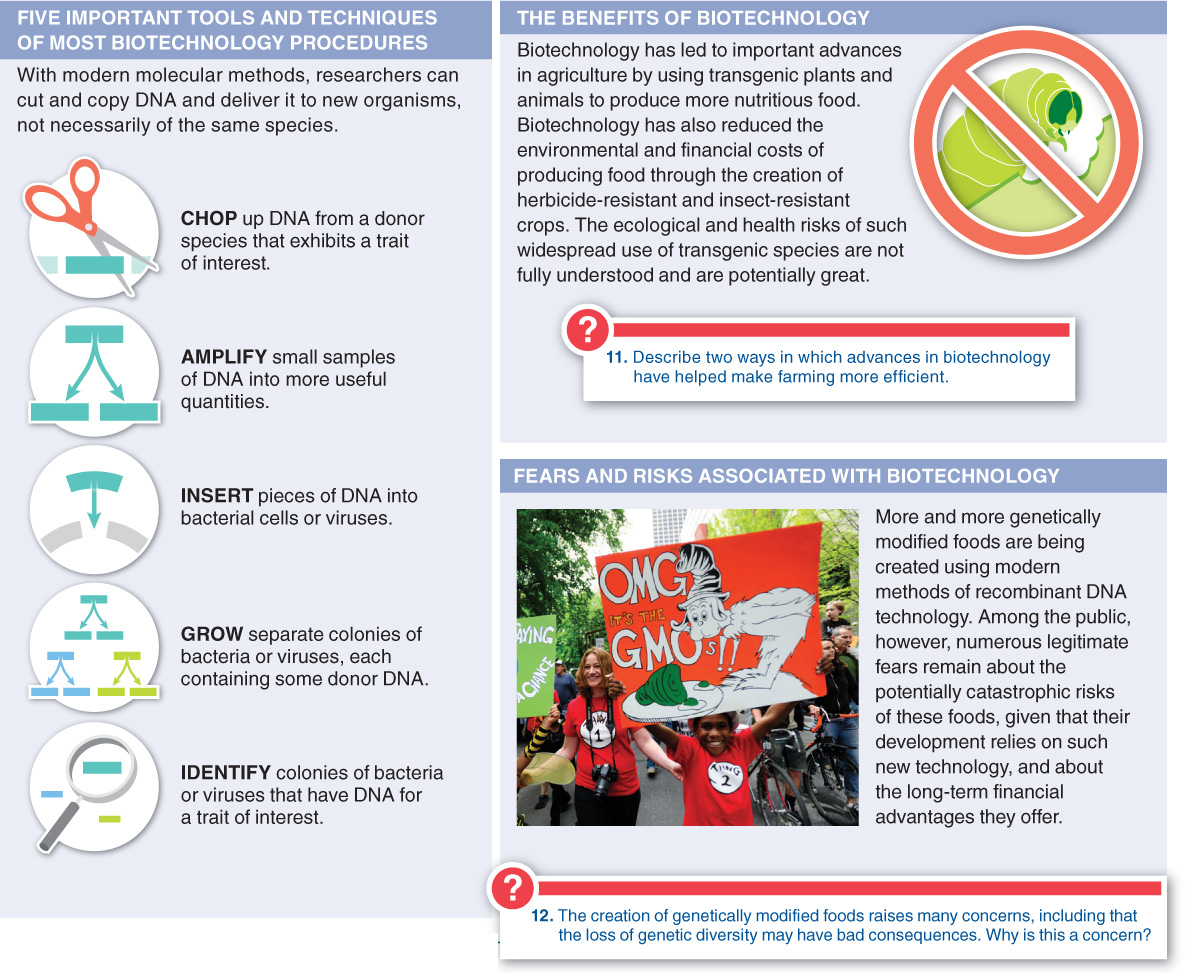5.12–5.14
5.12–Biotechnology is producing improvements in agriculture.
Biotechnology is the use of technology to modify organisms, cells, and their molecules to achieve practical benefits.

Q
Which of the following statements about mutations is incorrect?
- a) Mutations are very rare.
- b) A mutation in DNA always leads to changes in the structure and function of the protein produced.
- c) When one nucleotide base pair is replaced by another, this constitutes a point mutation.
- d) One general type of mutation is a change to the overall organization of chromosomal genes.
- e) X rays can cause mutations.

Which of the following statements about the metabolism of ethanol (which is present in alcoholic beverages) is incorrect?
- a) Individuals who produce nonfunctioning aldehyde dehydrogenase exhibit “fast-
flushing.” - b) The process requires two enzymes: alcohol dehydrogenase and isopropyl dehydrogenase.
- c) Individuals who are “fast-
flushers” are less likely to become alcoholics. - d) Aspirin interferes with the action of alcohol dehydrogenase.
- e) None. All of the statements above are correct.

The polymerase chain reaction (PCR):
- a) makes it possible to create huge numbers of copies of tiny pieces of DNA.
- b) enables researchers to determine the sequence of a complementary strand of DNA when they have only single-
stranded DNA. - c) utilizes RNA polymerase to build strands of DNA.
- d) can create messenger RNAmolecules from small pieces of DNA.
- e) All of the above are correct.

Which of the following is not a difficulty that medicine has encountered in its attempts to cure human diseases through gene therapy?
- a) The transfer organism—
usually a virus— may get into unintended cells and cause disease. - b) It is difficult to get the working gene into the specific cells where it is needed.
- c) It is difficult to get the working gene into enough cells at the right rate to have a physiological effect.
- d) For many diseases, a malfunctioning gene has not been identified.
- e) All of the above are difficulties encountered in attempts to cure human diseases through gene therapy.

229